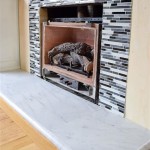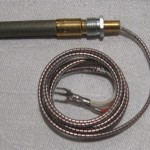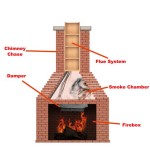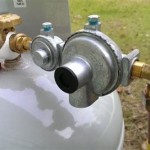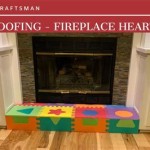Antique Fireplace Grates: A Comprehensive Overview
Antique fireplace grates are more than mere functional elements; they represent a tangible link to the past, offering a glimpse into the craftsmanship, design sensibilities, and heating practices of previous eras. These grates, often constructed from cast iron, wrought iron, or a combination of materials, served the crucial purpose of elevating firewood within the fireplace, allowing for improved airflow and more efficient combustion. Understanding their historical context, construction, styles, and valuation is essential for collectors, interior designers, and anyone seeking to incorporate these pieces of history into their homes.
The history of fireplace grates is intertwined with the evolution of heating technology. Early fireplaces lacked grates altogether, relying on a simple hearth upon which firewood was laid. The introduction of grates marked a significant advancement, promoting better air circulation beneath the fire and allowing ashes to fall away, resulting in a cleaner, more consistent burn. Over time, grate designs became increasingly elaborate, reflecting changing aesthetic preferences and advancements in metalworking techniques. The types of fuel used also influenced design. For example, grates designed for coal often featured smaller openings to prevent the coal from falling through.
Dating an antique fireplace grate can be challenging but is often achievable through careful observation of its design, construction, and any markings it may bear. Certain decorative motifs, such as specific floral patterns or geometric shapes, were more prevalent during particular periods. Construction techniques, such as the type of welding or riveting used, can also provide clues about the grate's age. Maker's marks or foundry stamps, while not always present, can offer valuable information about the grate's origin and production date. A careful comparison with documented examples and research in historical catalogs can further assist in the dating process.
Key Point 1: Materials and Construction Techniques
The choice of materials significantly impacted the durability, appearance, and functionality of antique fireplace grates. Cast iron was a popular choice due to its ability to withstand high temperatures and its capacity to be molded into intricate designs. Wrought iron, known for its strength and malleability, was often used for structural components and finer details. Brass and other decorative metals were sometimes incorporated for embellishment, adding a touch of elegance to more ornate grates.
The construction techniques employed in creating antique fireplace grates varied depending on the period and the skill of the craftsman. Early grates were often hand-forged, reflecting the artistry and labor-intensive processes characteristic of blacksmithing. As technology advanced, casting became more prevalent, allowing for the mass production of grates with increasingly complex designs. Riveting, welding, and other joining methods were used to assemble the components of the grate, ensuring its structural integrity. The presence of hand-hammered details or unique welding patterns can be indicative of an older, more carefully crafted piece.
Understanding the properties of different metals and the techniques used to work them is crucial for assessing the quality and authenticity of an antique fireplace grate. For example, cast iron grates are often heavier and more prone to rust than wrought iron grates. Recognizing the signs of skilled craftsmanship, such as clean welds and well-defined details, can also help distinguish genuine antiques from later reproductions.
Key Point 2: Styles and Design Evolutions
Antique fireplace grates exhibit a wide range of styles, reflecting the diverse aesthetic movements that have shaped interior design throughout history. Early grates tended to be simple and functional, with minimal ornamentation. As the centuries progressed, grate designs became more elaborate, incorporating decorative motifs such as floral patterns, geometric shapes, and allegorical figures.
The Georgian period (1714-1830) saw the emergence of elegant and symmetrical grate designs, often featuring classical motifs and delicate detailing. The Victorian era (1837-1901) was characterized by ornate and elaborate grates, reflecting the Victorian penchant for ornamentation and embellishment. Art Nouveau (1890-1910) grates were distinguished by their flowing lines, organic forms, and depictions of nature. Art Deco (1920s-1930s) grates embraced geometric patterns, streamlined shapes, and a modern aesthetic.
Identifying the stylistic characteristics of an antique fireplace grate can provide valuable clues about its age and origin. Researching historical design catalogs and comparing the grate to documented examples can further assist in this process. Understanding the historical context of different design styles can also enhance appreciation for the grate's artistic and cultural significance.
Key Point 3: Identifying Reprductions and Assessing Condition
The increasing popularity of antique fireplace grates has led to a rise in reproductions. Accurately identifying an antique grate from a modern replica is vital when considering adding one to a collection or purchasing it for practical usage. Distinguishing genuine antiques from reproductions requires careful attention to detail and a thorough understanding of the materials, construction techniques, and design characteristics described earlier.
Modern reproductions often lack the patina and subtle imperfections that are characteristic of genuine antiques. They may also be made from different materials or using modern manufacturing processes, resulting in a less authentic appearance. Examining the grate closely for signs of age, such as rust, wear, and minor imperfections, can help differentiate it from a newly manufactured replica. The quality of the casting and the precision of the details can also be indicators of authenticity.
Assessing the condition of an antique fireplace grate is crucial for determining its value and functionality. Look for signs of damage, such as cracks, breaks, or missing components. Rust is a common problem, particularly for cast iron grates, and should be addressed to prevent further deterioration. While some restoration may be necessary to improve the grate's appearance and functionality, it is essential to avoid over-restoring it, as this can diminish its historical value. Consulting with a qualified antique restorer can help determine the best course of action for preserving the grate's integrity and authenticity.
The size of an antique fireplace grate is an important attribute. They were made in a variety of sizes to complement different fireplace designs. Measuring the width, height, and depth of the grate is essential to ensure it fits properly within a fireplace opening. Furthermore, the grate's design should be appropriately scaled for the size of the fireplace. A grate that is too large may overwhelm the fireplace, while one that is too small may look out of place.
Considering the provenance of an antique fireplace grate can add considerable value and historical interest. Provenance refers to the grate's documented history of ownership and origin. If the grate can be traced back to a specific historical building or individual, it may be more valuable and desirable to collectors. Information about provenance can sometimes be found in historical records, auction catalogs, or through family histories.
The market value of antique fireplace grates varies widely depending on factors such as age, style, condition, rarity, and provenance. Grates with unique designs, exceptional craftsmanship, or a documented history tend to command higher prices. Consulting with an experienced antique appraiser can provide an accurate assessment of the grate's value and help determine its fair market price. Online auction sites and antique dealers can also provide valuable information about current market trends.
The placement of an antique fireplace grate within a room can significantly impact its visual appeal. Consider the style and decor of the room when choosing a grate. A more ornate grate may be better suited to a formal living room, while a simpler grate may be more appropriate for a rustic or informal setting. The grate can be paired with other antique fireplace accessories, such as andirons, fenders, and fire tools, to create a cohesive and historically accurate look.
Maintaining an antique fireplace grate is essential for preserving its beauty and functionality. Regularly clean the grate to remove soot and ash. Apply a protective coating to prevent rust and corrosion. Avoid using harsh chemicals or abrasive cleaners, as these can damage the grate's surface. Store the grate in a dry place when it is not in use. With proper care and maintenance, an antique fireplace grate can provide years of enjoyment and serve as a timeless reminder of the past.
The appeal of antique fireplace grates extends beyond their functional purpose. They are works of art that reflect the craftsmanship and design sensibilities of their time. They add character and charm to any room, creating a warm and inviting atmosphere. Whether used as a decorative accent or as a functional element in a working fireplace, antique fireplace grates offer a unique opportunity to connect with history and appreciate the beauty of the past.
Eclectic Red Barn Antique Fireplace Grate Decorated For

Antique Cast Iron Fireplace Basket Grate Coal Box Wood Log Holder Insert Free

10 Antique Fire Grates For Ingantiques Co

Vintage Fire Grate Tudor Rose Antiques

Antique Fireplace Log Grate H806 Charles Nijman Antiques

Georgian Style Antique Fire Grate For At 1stdibs Fireplace Grates

Vintage Cast Iron Fireplace Insert Grate Basket Accessories Home Decor Lovebirds Rustic Lighting Heavy Black Gold Birds Sweden

Old Iron Fire Grate With Dogs Tudor Rose Antiques

1900s Antique Victorian Cast Iron Fire Grate Chairish

Antique Cast Iron Fireplace Coal Box Firewood Grate Basket Hearth
Related Posts

